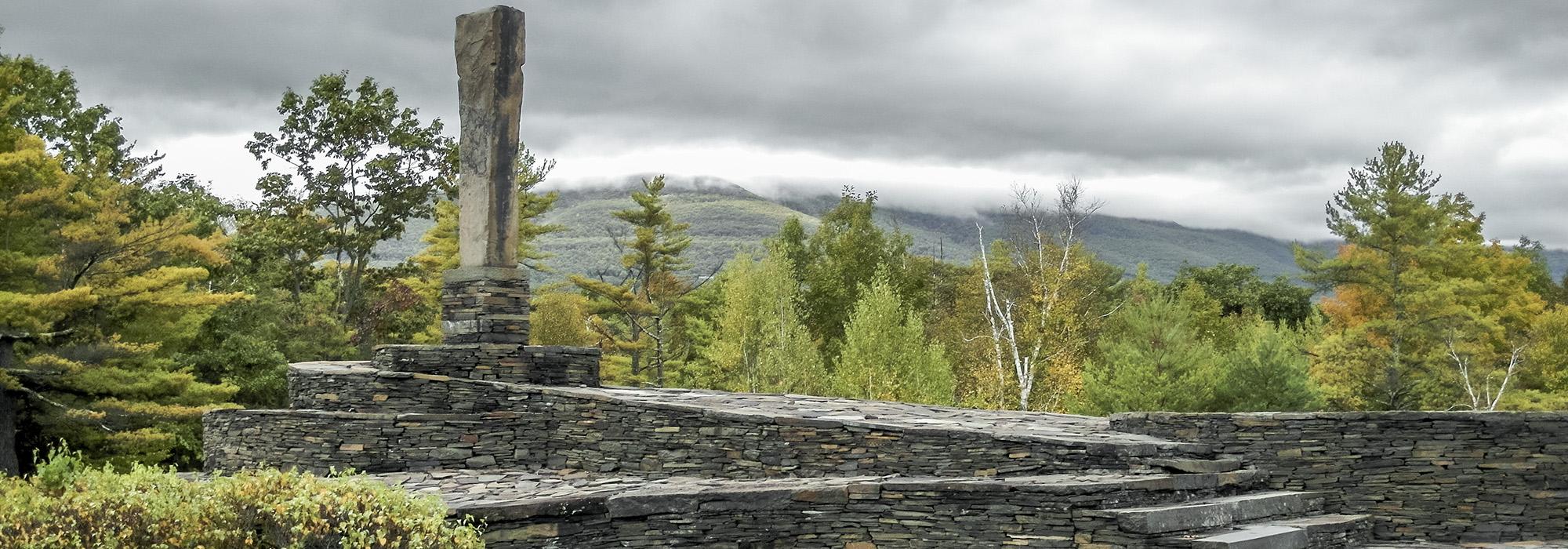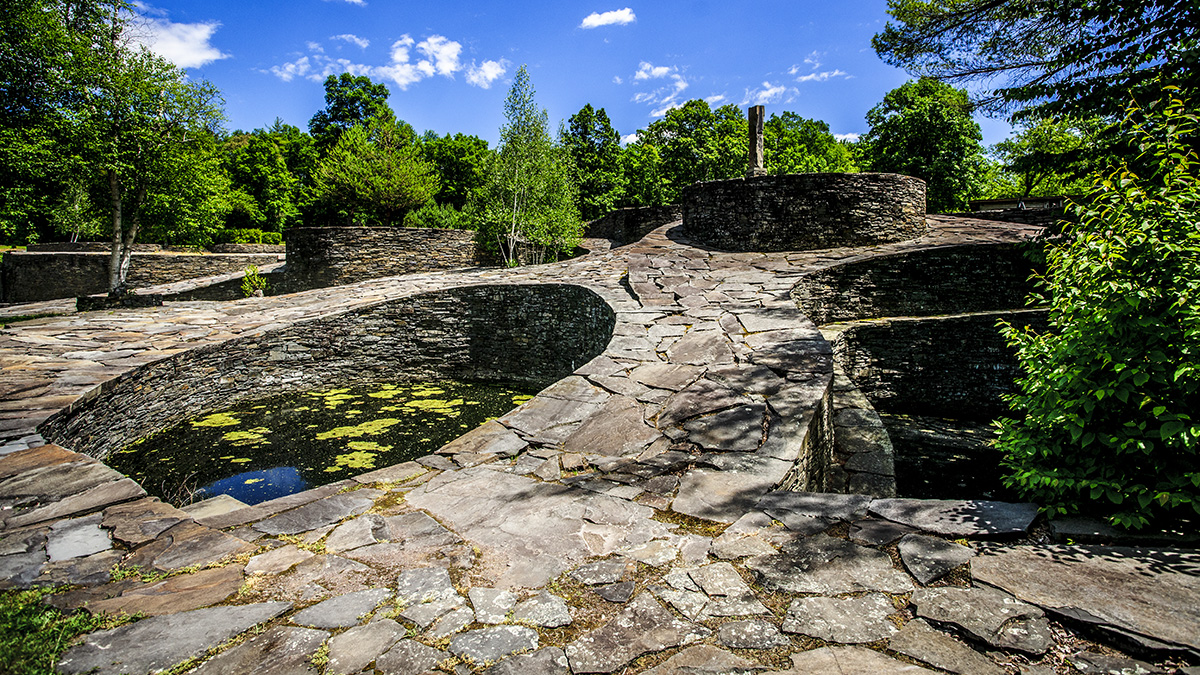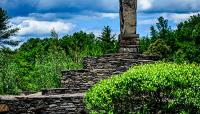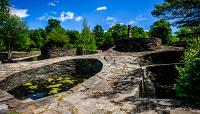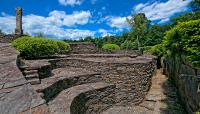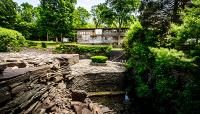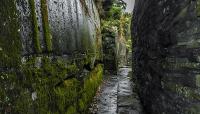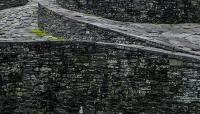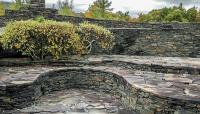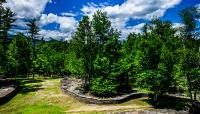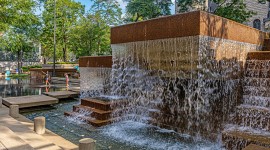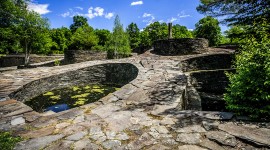Located in the Catskill Mountains approximately100 miles north of New York City, this 6.5-acre site comprises the masterwork of self-taught sculptor Harvey Fite. In 1938, Fite, a professor of art at Bard College, purchased an abandoned quarry for its bluestone to be used in his figurative sculpture. Shortly thereafter, he spent several months at Tikal and Copán in Honduras restoring Mayan architecture, where he was inspired by the beauty and resilience of dry-stacked stone constructions.
Responding to the site’s existing conditions and using traditional quarryman’s tools and techniques, Fite laid millions of pieces of bluestone by hand without mortar to construct a series of curvilinear terraces connected by stepped and sloping pathways. Surrounded by aspen, birch, and pine, Fite preserved native vegetation and naturally-occurring pools of water. Tiered platforms provide access to broad vistas while a network of ramps, bridges, and stairways terminate at exposed bedrock sixteen-feet below grade. Though the site was originally intended to be used as exhibition space, the artist eventually grew to believe that the site itself was the sculpture. Twenty years after commencing the work, Fite erected a nine-ton asymmetrical bluestone monolith at the center of the landscape to serve as a focal point. Working alone from 1939 until he accidentally fell to his death in 1976, Fite’s widow opened the site to the public in 1977. Named for the number of years Fite thought he would work on the installation, Opus 40 was listed in the National Register of Historic Places in 2001.



